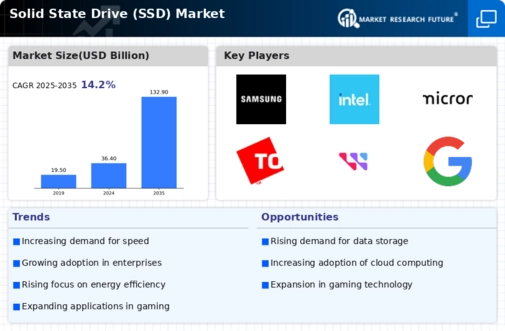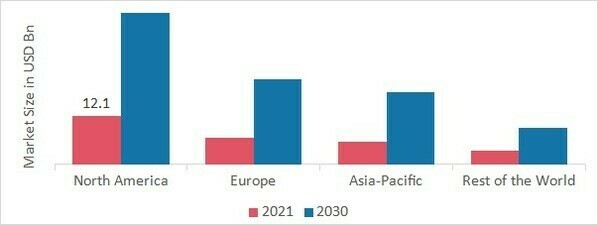Market Growth Projections
The Global Solid State Drive (SSD) Market Industry is projected to experience substantial growth over the next decade. With a market value of 36.4 USD Billion in 2024, it is expected to reach 132.9 USD Billion by 2035, reflecting a robust demand for SSD technology. The anticipated CAGR of 12.49% from 2025 to 2035 indicates a strong upward trajectory, driven by factors such as technological advancements, increased adoption in consumer electronics, and the expansion of data centers. This growth underscores the critical role SSDs will play in the future of data storage.
Technological Advancements in SSDs
Technological advancements in SSDs contribute to the evolution of the Global Solid State Drive (SSD) Market Industry. Innovations such as 3D NAND technology and PCIe interfaces enhance storage capacity and performance, making SSDs more appealing to consumers and enterprises alike. These advancements enable higher data transfer speeds and increased durability, which are essential for demanding applications. As a result, the market is poised for a compound annual growth rate (CAGR) of 12.49% from 2025 to 2035. This growth trajectory suggests that ongoing research and development will continue to drive the adoption of SSDs across various sectors.
Rising Adoption of Consumer Electronics
The Global Solid State Drive (SSD) Market Industry is witnessing a rising adoption of SSDs in consumer electronics, particularly in laptops, desktops, and gaming consoles. As consumers seek faster boot times and improved performance, manufacturers are increasingly integrating SSDs into their products. This trend is supported by the growing popularity of gaming and high-performance computing, where speed is paramount. The market's expansion is evident, with projections indicating a significant increase in SSD adoption rates, further solidifying the position of SSDs as the preferred storage solution in consumer electronics.
Emerging Markets and Increased Investment
Emerging markets are playing a pivotal role in the growth of the Global Solid State Drive (SSD) Market Industry. Countries in Asia-Pacific and Latin America are experiencing increased investment in technology infrastructure, leading to a heightened demand for SSDs. As these regions develop their digital economies, the need for efficient and reliable storage solutions becomes paramount. This trend is likely to drive the market forward, as businesses in these regions adopt SSD technology to enhance their operational capabilities and compete on a global scale.
Expansion of Data Centers and Cloud Services
The Global Solid State Drive (SSD) Market Industry is significantly influenced by the expansion of data centers and cloud services. As businesses increasingly migrate to cloud-based solutions, the demand for reliable and high-speed storage solutions escalates. SSDs are favored for their speed and durability, making them ideal for data center applications. The market is expected to grow substantially, with projections indicating a rise to 132.9 USD Billion by 2035. This growth is indicative of the critical role SSDs play in supporting the infrastructure of modern digital services, thus driving the overall market forward.
Increasing Demand for High-Performance Storage Solutions
The Global Solid State Drive (SSD) Market Industry experiences a surge in demand for high-performance storage solutions, driven by the proliferation of data-intensive applications. Industries such as gaming, video editing, and cloud computing require faster data access and transfer rates, which SSDs provide. In 2024, the market is projected to reach 36.4 USD Billion, reflecting a growing preference for SSDs over traditional hard drives. This trend is likely to continue as organizations seek to enhance operational efficiency and user experience, indicating a robust growth trajectory for the SSD market.


 Source: Secondary Research, Primary Research, MRFR Database and Analyst Review
Source: Secondary Research, Primary Research, MRFR Database and Analyst Review

















Leave a Comment